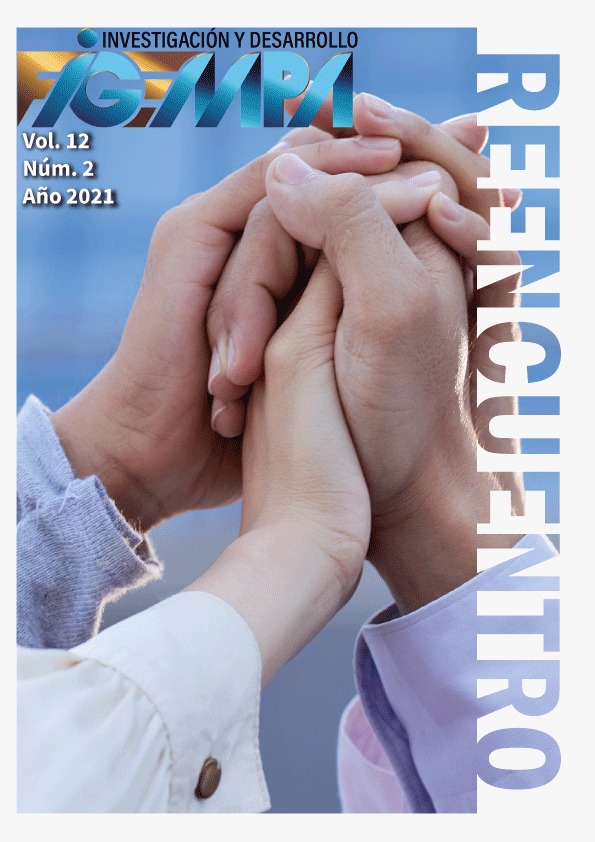Stress-strain analysis of works remediation implemented to stabilize the mining subsidence under La Inmaculada School, Zaruma-Ecuador.
Main Article Content
Abstract
Four stress-strain are established that demonstrate the instability process and remediation work, in relation to the subsidence and collapse event of the land where the school the was established “La Inmaculada” (Zaruma-Ecuador). Longitudinal profiles were used in direction of the use “Tres Reyes” vein, where the geological-structural model that serves as basis for strains calculation in the mining galleries around their plastic behavior. The modeling was necessary to determine; the infrastructure dead load, pseudo-static loads, groundwater position, physical -mechanical-elastic parameters of the rock matrix and discontinuities that together define the stress and deformation behavior by the finite elements method numerical (FEM). It designed an optimized mortar with cement (C): two tailings (T) at 1:2 and 0.49 water ratio (W)/cement (C), obtaining a resistance of 18 MPa after fourteen curing days. Finally, it is verified that the fill application in paste inside the galleries surrounding the collapse zone, the strain rock substrate decreases from 1.9 m (scenario two: empty cone) to 0.05 m (scenario four: pulp fill).
Downloads
Metrics
Article Details

This work is licensed under a Creative Commons Attribution-NonCommercial 4.0 International License.
References
Barton, N.R. and Bandis, S.,1990. Review of predictive capabilities of JRC-JCS model in engineering practice. In Rock joints, proc. int. symp. on rock joints, Loen, Norway, (eds N. Barton and O. Stephansson), pp. 603-610. Rotterdam: Balkema.
Bieniawski ZT, 1989. Engineering rock mass classifications. John Wiley, New York,251.
Bonilla W., 2009. Tesis Doctoral: Metalogénica del Distrito Minero Zaruma-Portovelo República del Ecuador, pp. 219.
Guía de escolleras, 2009. Guía para el proyecto y la ejecución de muros de escollera en obras de carretera. 3ª edición: 36 pp.
Hoek, E., Carranza-Torres, C. and Corkum, B., 2002. Hoek-Brown Failure Criterion – 2002 Edition. 5th North American Rock Mechanics Symposium and 17th Tunneling Association of Canada Conference: NARMS-TAC, 2002, pp. 267-271.
Instituto Nacional de Investigación Geológico, Minero, Metalúrgico – INIGEMM, 2017. Estudio multidisciplinario para la estabilidad del cono y chimenea de colapso de la Unidad Educativa “La Inmaculada Fe Y Alegría” – Cantón Zaruma: pp. 546.
Lambe, T. W., y Whitman, R. V., 2010. Mecánica de suelos. (1a ed.), México, D.F.: Limusa: pp. 163.
Perucho, Á., 2004. Estudio de deformabilidad de escolleras. Tesis (Doctoral), E.T.S.I. Caminos, Canales y Puertos (UPM): pp. 69-72.
Reyes, A., Valverde, E., Ordóñez, J., Romero, M., 2014. Historia del Cantón Zaruma. Colección: Historia de la Provincia de El Oro. Machala – Ecuador: pp. 267.
Rivadeneira, A., 2021. Relleno pasta aplicando un modelo de estabilidad en excavaciones subterráneas, mediante caracterización química y geotécnica del relave, bajo el hundimiento de la unidad educativa “fe y alegría”, en la ciudad de Zaruma, provincia de El Oro. Universidad Central del Ecuador, Quito.
Rivera G., 2013. Concreto Simple. Civilgeeks.com -Universidad del Cauca-Cap 9: pp. 203.
Rondón, H., Fernández W. y Hernández J., 2013. Influence of Subgrade and Unbound Granular Layers Stiffness on Fatigue Life of Hot Mix Asphalts – HMA. Tecnológicas: pp. 57-59.
Selim P., Amir G., Ertekin O., Metin H., y Serhat D., 2017. Experimental Determination of Cohesion and Internal Friction Angle on Conventional Concretes. ACI Materials Journal: pp. 407

